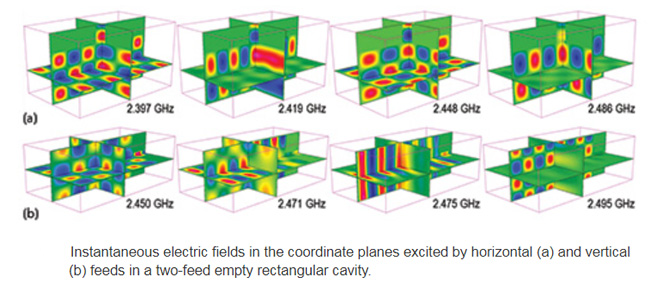The oven is going under a revolutionary change in the next few years, as RF energy enters the cooking market in the form of new microwave ovens. As the technology is perfected over the next year or two, microwave ovens will be replaced with multiple source solid-state RF ovens which in turn could be introduced into the traditional gas/electric heated ovens most widely used today. It just so happens that this is the 50th anniversary of the first commercial countertop microwave oven sold in 1967--so a good time to celebrate a new innovation, as not much has change with the microwave oven over the last 50 years.
In case you have not heard the story of how the microwave oven was invented, it all started back in 1939 when Percy Spenser, an engineer at Raytheon, noticed that a candy bar in his pocket had melted while he stood near an active radar setup. He discovered that it was the microwave energy from the radar was melting it. Although the technology progressed over the years, by 1947 the microwave oven was still about the weight of a modern refrigerator and cost $5,000. By 1967, 20 years later, a countertop model became commercially available and sold by Amana for about $500.
Fast forward to 2012, and the first solid-state RF energy proto-type oven was demonstrated. In 2016, a small, portable model that is battery operated was introduced using this technology. While RF energy models for the everyday kitchen are not currently commercially available, they are being used for some professional applications as they are still quite expensive. But the RF Energy Alliance, which was formed in 2014, has a roadmap to bring down the cost soon to a level that regular consumers can afford. Expect to start seeing these new versions in the next year or two if everything goes according to plan.
Current microwave ovens use a cavity magnetron to create the microwave energy which is introduced into the oven from one source. In the oven area, standing waves are created leaving peaks and nulls across the oven chamber with the spacing related to the frequency used. Since there is only one source using a single frequency, there is no way to avoid some areas of the oven heating food very quickly and others more slowly, causing food to cook unevenly. This method limits the functionality of the microwave oven today, which is used mostly to re-heat food, although some have added convention heating to somewhat compensate for that.
The RF energy oven uses solid-state semiconductor technology instead of a cavity magnetron. This miniaturizes the energy source allowing multiple inputs into the oven chamber. It also enables the frequency and phase of the RF energy to be changed, allowing the standing wave pattern to be varied during cooking so the heat can be evenly distributed throughout the food. Better yet, the oven can sense areas that are colder than others and direct more RF energy to just those areas allowing different foods in the oven to all be cooked evenly. This is shown in the figure below as the heat distribution is displayed at various frequencies or modes that can be generated using just two solid state sources.

So with this new level of control, a plate with several different foods can all be cooked to perfection, even if they take vastly different amounts of energy to accomplish that. These ovens have been shown to defrost a frozen item next to another that is not frozen, cooking them both to the correct level of “doneness.” This can be done to a whole plate of various different types of foods so you can cook your meat, potato and vegetables together with excellent results. This gives you the speed of microwave ovens and the control of conventional ovens all in one, single oven.
Once perfected, this technology could be applied to conventional ovens that could use a combination of gas/electric heat or RF energy to most efficiently cook whatever is in the oven. Then we will not need a separate microwave oven since everything can be cooked together in one oven, even if they require vastly different cooking times or temperatures. With the Internet of Things (IoT) happening in parallel to this revolutionary change in heating technology, ovens can be connected to the Internet and automatically load the recipe selected and even suggest alternative recipes (or you can just ask Alexa or Google to do it for you). We can then just put everything in one oven and come back a few minutes later and dinner is ready--the Jetsons have arrived!

